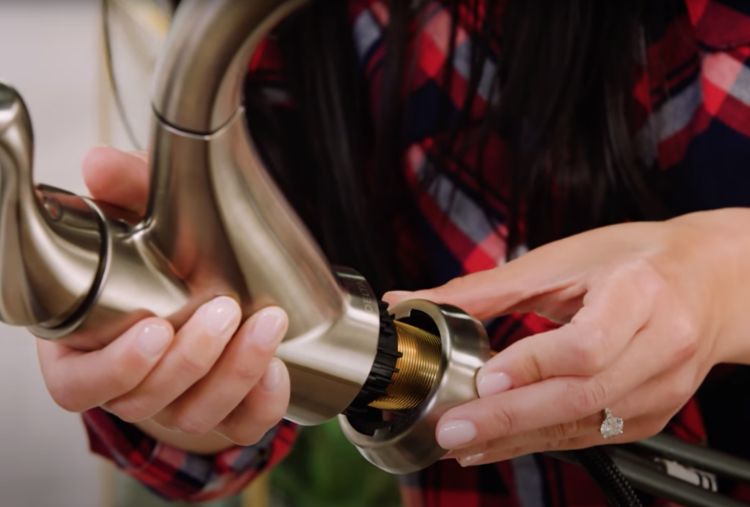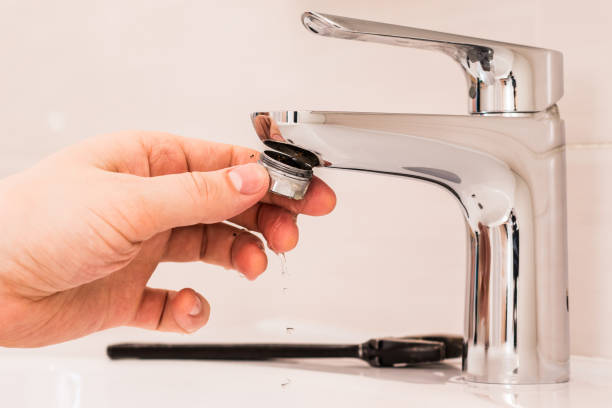When It's Critical to Rectify a Dripping Faucet
When It's Critical to Rectify a Dripping Faucet
Blog Article
Just how do you feel when it comes to Why Are My Faucets Dripping (And Can I Fix It Myself)??

Dripping faucets may appear like a small aggravation, but their impact goes beyond just the nuisance of the audio. From drainage to incurring unnecessary economic expenses and health and wellness risks, overlooking a leaking tap can bring about different consequences. In this write-up, we'll explore why it's crucial to resolve this usual house concern immediately and properly.
Wastage of Water
Ecological Impact
Dripping taps add significantly to water wastage. According to the Environmental Protection Agency (EPA), a solitary tap dripping at one drip per second can waste greater than 3,000 gallons of water per year. This not just stress water resources however also influences ecological communities and wildlife dependent on them.
Step-by-Step Overview to Fixing a Dripping Tap
Devices Called for
Prior to attempting to repair a trickling faucet, collect the required devices, including a flexible wrench, screwdrivers, replacement parts (such as washing machines or cartridges), and plumber's tape.
Common Faucet Issues and Their Solutions
Recognize the type of tap and the details issue triggering the drip. Typical troubles include worn-out washers, corroded valve seats, or malfunctioning O-rings. Describe supplier instructions or online tutorials for step-by-step assistance on repair services.
Financial Prices
Increased Water Bills
Past the ecological influence, trickling taps can blow up water costs considerably. The gathered wastefulness gradually equates into higher energy expenditures, which might have been avoided with prompt repair services.
Prospective Residential Property Damage
Moreover, long term leaking can bring about damage to fixtures and surface areas surrounding the faucet. Water build-up can create discoloration, corrosion, and even structural problems if left neglected, causing added repair expenses.
Wellness Issues
Mold And Mildew and Mold Development
The continuous existence of moisture from a trickling faucet creates an ideal setting for mold and mold growth. These fungi not just compromise interior air quality however also present health dangers, specifically for individuals with respiratory system conditions or allergies.
Waterborne Illness
Stationary water in leaking taps can become a breeding ground for microorganisms and various other pathogens, enhancing the danger of waterborne illness. Impurities such as Legionella microorganisms thrive in stagnant water, potentially causing major illnesses when ingested or breathed in.
DIY vs. Professional Fixing
Advantages and disadvantages of DIY Fixing
While some may try to repair a trickling faucet themselves, do it yourself repair work feature their very own collection of difficulties. Without correct knowledge and devices, do it yourself attempts can worsen the issue or result in insufficient repairs, extending the issue.
Advantages of Hiring a Specialist Plumber
Hiring a professional plumber makes certain that the underlying reason for the leaking tap is resolved effectively. Plumbings possess the know-how and tools to detect and repair faucet problems effectively, saving time and lessening the danger of further damage.
Ecological Obligation
Individual Payment to Preservation
Taking obligation for taking care of leaking taps straightens with broader efforts toward water conservation and ecological sustainability. Every individual's actions jointly make a substantial effect on preserving valuable resources.
Sustainable Living Practices
By focusing on timely fixings and embracing water-saving practices, individuals contribute to sustainable living methods that profit both existing and future generations.
Preventive Measures
Normal Upkeep Tips
To stop dripping faucets, perform regular upkeep such as cleaning aerators, examining for leakages, and changing damaged parts quickly. In addition, think about setting up water-saving devices or updating to more reliable fixtures.
Value of Prompt Repair Works
Attending to dripping faucets as quickly as they're noticed protects against further water wastefulness and possible damage, ultimately conserving both water and money in the long run.
Effect On Residential Property Worth
Perception of Well-Maintained Residential Property
Preserving a building in good condition, consisting of resolving upkeep concerns like trickling taps, boosts its regarded worth and worth among potential buyers or tenants.
Impact on Resale Worth
Residences with properly maintained plumbing fixtures, consisting of taps, command greater resale values in the property market. Attending to trickling taps can contribute to a favorable impression during residential or commercial property assessments and negotiations.
Verdict
Attending to a trickling tap exceeds plain comfort; it's an important step towards saving water, lowering financial costs, and safeguarding health and wellness and residential or commercial property. Whether through DIY repair services or expert help, doing something about it to repair dripping taps is a tiny yet impactful method to advertise responsible stewardship of resources and contribute to a healthier, much more sustainable future.
How to Fix a Leaky Faucet: Step-by-Step Repair Guide
A leaky faucet may seem like a simple annoyance, but if it's not fixed promptly, that leak could cost hundreds to potentially thousands. From water damage to mold, mildew, and high water bills, even a tiny leak can be catastrophic if left unattended. Damage like this can even affect the overall value of your home, so it's important to take the right approach for leaky faucet repair. You may need the help of a plumber in some cases, but we've got a few tips you can try on how to fix a leaky faucet before calling the pros.
Four Faucet Types
When you're learning how to fix a leaky faucet, the first step is knowing what kind of faucet you're working with! There are four common types.
Cartridge Faucets
Cartridge faucets come in one- or two-handled varieties. In one-handled cartridge faucets, hot and cold water combines in a single cartridge. In the two-handled versions, hot and cold water are controlled separately and mixed in the faucet.
Ball Faucets
Ball faucets have a single lever you push up and down to adjust the pressure and rotate to change the temperature. A slotted metal ball controls the amount of water allowed into the spout.
Compression Washer Faucets
They're the oldest type of faucet, but they're still used in many homes — especially older ones. Compression faucets have two separate handles that, when turned, raise or lower the washer that seals a water valve. This valve stops water from flowing through the faucet when it is turned off.
Disc Faucets
Disc faucets rarely need to be repaired due to their maintenance-free design. The water flow is controlled by two discs — the upper one raises and lowers against a fixed lower disc, creating a watertight seal. If your disc faucet starts leaking, you may need to replace the seals or clean residue buildup from the inlets.
Fixing a Leaky Faucet
Step 1: Turn Off the Water
Whether you're learning how to fix a leaky bathtub faucet or how to fix a leaky kitchen faucet, always turn off the water supply to your working area when you're fixing a leak. The last thing you want is a flood added to your list of things to fix.
Look for the shutoff valves below your sink or around the tub and turn them clockwise to stop the water flow. If your faucet doesn't have shutoff valves, you may need to turn off the water for the whole house. Check to make sure it's off by turning the faucet on. If nothing comes out, you're ready to start the repair.
Step 2: Take Apart the Faucet
How you disassemble your faucet depends on the type of fixture you have. You can use a flathead screwdriver to remove the caps on top of the handle or handles for cartridge and compression faucets. Inside, you should see handle screws. Unscrew these with a screwdriver to remove the handle.
Disc- and ball-style faucets will typically have an inlet screw near the handle, and removing that will reveal the interior of the faucet.
Detach the Valve Stem
For cartridge- and compression-style faucets, you'll see the inner valve stem or cartridge once you remove the faucet handles. If you have a compression faucet, unscrew the brass valve stem. If you have a cartridge faucet, pull out the cartridge. If your cartridge has been in place for a while, it may require some tools or extra force to remove it due to mineral deposits.
Examine and Replace Parts
Once you've removed the parts, check them out to confirm what needs to be replaced. You may see corroded rubber washers, O-rings, stems, or cartridges. On a ball-style faucet, check the seats and springs for damage.
If you need to repair a leaky disc faucet, check the inlet and seals on the lower disc.
Once you determine what parts must be replaced, visit your local hardware store. Bring the damaged parts with you to ensure you can purchase the correct components to replace them.
Clean Valves and Faucet Cavity
If you've removed a stem or cartridge, you may notice mineral buildup in the faucet's threads. Use white vinegar to clean the valve seat by soaking it for a few minutes, then scrub it away with a soft toothbrush and rinse with warm water. You can also clean the interior of the faucet in the same way.
Reassemble the Faucet
Once your faucet is cleaned and the required parts have been replaced, it's time to reassemble it. Put the pieces back together and slowly turn the water supply back on. Doing this slowly is crucial because too much initial water pressure can damage the new hardware you've just installed.
https://homewarranty.firstam.com/blog/how-to-fix-leaky-faucet

Do you really like reading about Leaky Faucets: Why They Happen & What to Do About Them? Place feedback down the page. We would be glad to listen to your ideas about this review. Hoping to see you back again later on. Don't hesitate to pause to promote this post if you liked it. Bless you for your time. Kindly check up our site back soon.
Report this page